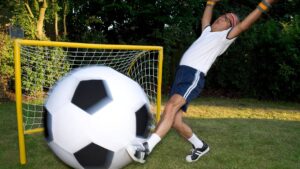Dr Boreham’s Crucible: Drug-development unicorn Neuren banks on ‘cascade of long-term growth’

Tim Boreham is one of Australia's best-known small-cap share analysts and business journalists.
Neuren Pharmaceuticals (ASX:NEU) and its US partner Acadia Pharmaceuticals have been blitzing it with its Rett syndrome drug Daybue (formerly trofinetide), which has exceeded the expectations of two years ago when the drug was approved in the US.
“Achieving $350 million in the first year of sales was more than anyone expected,” says Neuren CEO Jon Pilcher.
Rather than coveting the bird in the hand, Neuren’s soggy share price suggests investors are peering in the bushes for the next company-transforming drug to take flight.
Neuren has embraced this metaphoric ornithological quest, last month unveiling a new development program for the childbirth disorder hypoxic-ischemic encephalopathy (HIE).
This hitherto undisclosed indication compliments Neuren’s other known programs for extension neurological disorders, three of which are in phase II stage.
A drug development ‘unicorn’
Neuren is an ultra-rare story of an Australian developed drug winning FDA approval, albeit in cahoots with the Nasdaq-listed Acadia.
Strictly speaking, this one’s a Kiwi success tale, in that Daybue (trofinetide) was invented 20 years ago by eminent Auckland University chemist Prof Margaret Brimble.
Daybue cost about US$250 million to develop over two decades, much of which was borne in the later stages by Acadia, which acquired the North American rights in August 2018.
In March 2023, the FDA approved Daybue for Rett syndrome in adults and children aged two or more.
A month later, Acadia started selling the drug. While Acadia assumed the global rights in mid-2023, Daybue is currently marketed only in the US.
Neuren’s chief financial officer since 2003, Pilcher succeeded Dr Richard Treagus who stepped down in 2020 after seven years in the top job.
Rett syndrome – a rare but nasty disease
Affecting only girls, Rett syndrome is caused by a genetic mutation that results in inadequate signalling between brain cells.
The disorder causes difficulties in talking, breathing, eating and sleeping. Often the girls appear to be normal until about 18 months, but then they stop meeting developmental milestones.
There are about 15,000 sufferers in Europe and 28,000 in China. In the US there are approximately 5,000 diagnosed patients, of an estimated 6,000 to 9,000 in total.
Based on naturally occurring molecules in the brain, Daybue reduces inflammation associated with excessive inflammatory cytokines and normalizes abnormally low levels of the insulin-like growth factor hormone 1 (IGF-1).
The drug is a life-long treatment.
The perils of childbirth
Hypoxic-ischemic encephalopathy results from a baby’s brain not getting enough oxygen or blood flow before, or shortly after, birth.
According to Neuren, HIE affects about two to three in every 1,000 births in high income countries and 10 to 30 per 1,000 births in low and middle-income geographies.
HIE’s symptoms include developmental delays, cognitive impairment, cerebral palsy, and seizures.
Pilcher estimates the US market at about 6,000 surviving new patients each year, about the same as for Rett syndrome.
Given the US threshold for a rare disease is fewer than 200,000 patients, Neuren expects the FDA to bestow orphan drug and rare paediatric disease designations.
Neuren plans to consult with the agency in the December 2025 quarter to devise a clinical trial path.
Currently, temporary hypothermia – cooling the baby’s head – is the only approved treatment.
There’s a link between the company and this technique, in that it was developed by the University of Auckland’s Prof Peter Gluckman (the company’s first chief scientific officer and formerly New Zealand’s chief scientific advisor).
“It was a clever innovation, but it does have its limitations,” Pilcher says. “We think we can provide a better long-term solution rather than a temporary aid”.
He says HIE results from “bad luck”, rather than lifestyle factors.
Phelan good about the pipeline
Despite management’s enthusiasm about HIE, the condition joins the queue behind its advanced programs for four other severe genetic disorders like Rett syndrome.
They are Phelan-McDermid, Angelman, Pitt Hopkins and Prader-Willi syndromes.
As with HIE, these trials road test a less toxic Daybue variant, NNZ-2591.
The company hopes to start a phase III study for the most advanced program, Phelin McDermid.
This is subject to a chat with the FDA to determine the structure of the trial.
Pilcher says that unlike with the Rett syndrome application, the company is helped by established endpoints and the diminished need for a proof-of-concept study.
While the reported results from the Phelin McDermid, Angelman and Pitt Hopkins trials were consistent, the Phelin McDermid results were the best.
In any event, the company considers Phelin McDermid to be the most attractive market, with a potential patients base twice that of the Rett syndrome population.
He notes the potential expansion of the patient base by re-classifying mis-diagnosed autism cases as Phelin McDermid patients.
The common element is a mutation of the shank3 gene.
“Autism has always been an umbrella term when people don’t know what it is,” says Pilcher, who notes Rett syndrome patients used to be classed as autistic as well.
Acadia is not involved in these follow-on trials, as they only have the rights for Rett syndrome and Fragile X (another disorder on Neuren’s to-do list, but further down).
“That means we pay for it 100%, but we also get 100% of the benefit.”
Finances and performance
Neuren reported a net profit of $142 million for the calendar 2024 year, down 9.6%.
Revenue (‘total income’) declined 5.1% to $227.8 million.
(The numbers are lower because in 2023 Neuren pocketed a US$100 million upfront payment when Acadia acquired the global rights).
The total income consisted of mainly quarterly royalties of $56.2 million (up 109%), sales milestone payments of $80.5 million (up 35%) and $76.5 million of proceedings from Acadia’s sale of a Rare Paediatric Disease Priority Review Voucher (PRV, see below).
The company also banked interest of $11 million.
The profit derives from milestone and royalty payments from Acadia, which is selling the drug in North America and has the rights to distribute elsewhere.
Acadia bears the cost of selling Daybue.
Acadia reported calendar 2024 Daybue net sales of US$348.4 million, up97 % and has guided to current year sales of US$380 million to US$405 million.
Given that, Neuren expects current-year royalties of US$62 million to US$67 million.
In the first two years of Daybue sales – 2023 and 2024 – Neuren has chalked up cumulative income of $445 million.
Over the last 12 months Neuren shares have danced between $24 (May 27 last year) and last Wednesday’s nadir of $8.72.
On Monday, the shares soared close to 20% after the company reported a convivial meeting with the FDA over endpoints for a phase III Phelan McDermid trial.
(On the same day, EBR Systems shares tumbled on FDA marketing approval of its heart device, so go figure…)
The stock has not escaped the harsh biotech sell-down, having tumbled 28% over the last month.
Neuren peaked at $25 in late December 2023. Twelve years ago, the shares were worth just a few pennies – or three cents to be exact (before a 20-to-one consolidation).
Cashed up and buying back shares
In January this year Neuren banked a handy US$50 million – its share of Acadia’s Priority Review Voucher (PRV) which sold for a bonanza US$150 million.
Neuren has launched a share buyback of up to $50 million.
The FDA awarded the PRV to Acadia on approval of Daybue, the idea being that any second drug gets valuable fast-track review status.
But the PRVs more commonly are sold to another pharma company – which is what Acadia did.
Pilcher says the voucher expected to sell for only US$100 million, so the company in effect received a bonus US$17 million on its one-third share.
The buyback is about half completed.
Pilcher says with $359 million in the bank, Neuren is in a “privileged position”.
“More milestone payments are expected from Acadia, once Daybue rolls out in Europe and Japan.”
He (roughly) estimates the cost of the trials at US$50-100 million each, bearing in mind these costs would be spread over some years.
Monitoring the Daybue drop-outs
Investors have focused on the discontinuance rate of Daybue, owing to known side effects such as diarrhoea.
In early 2023, a report from short-selling activist New York short-seller Culper Research alleged Daybue had been a “complete flop” for these reasons.
The assertions were largely discredited, but the shares fell 13%.
Sentiment also wasn’t helped by Acadia proffering overly frothy 2024 revenue guidance, which it had to temper in August after June quarter sales fell slightly short of expectations.
Acadia reports that 62% of patients have been on Daybue for 12 months or longer.
Pilcher says such rates are typical of those for other treatments of chronic, life-long conditions, with patients tending to peel off for “all sorts of reasons”.
He describes the “stable and predictable” continuation rate is improving as the company learns more about optimum dosage.
While all Daybue sales currently are derived from the US, the company expects first Canadian sales in the September 2025 quarter and European approval in the March quarter of 2026 (but Acadia will initiate some early-access programs).
The company says with 70% of the 5,500 to 5,800 diagnosed Rett patients yet to try Daybue, there is “substantial potential for growth” in the US.
Growth measures include attracting patients beyond the Rett syndrome “centres of excellence”, while Acadia has expanded its sales force by 30%.
Dr Boreham’s diagnosis
The company now has a poultice of real-world data on Daybue’s use in the US, which can support approval applications for the other indications as well as Daybue in Europe.
“Until there’s a competing product to take sales away, I don’t see how they won’t keep going,” Pilcher says.
Speaking of which, two gene therapies are being developed in the US.
Pilcher says “it is very unclear how good the data and safety profile is”.
In any event, the treatments could be compatible with Neuren’s, rather than competing.
Unsurprisingly, Pilcher is unhappy about the share price, attributing the malaise to institutional momentum and index trading rather than retail day traders.
“The market frustratingly is driven by momentum rather than fundamentals at the moment,” he says.
Neuren was the best-performing ASX 200 stock in 2023, so perhaps there’s an element of ‘what goes around, comes around’.
Whatever the case, Pilcher is undeterred.
“There’s a cascade of long-term growth for us,” he says.
At a glance
ASX Code: NEU
Share price: $10.90
Shares on issue: 127,993,374
Market cap: $1.39 billion
Chief executive officer: Jon Pilcher
Board: Patrick Davies (chair), Pilcher, Dianne Angus, Dr Jenny Harry, Joe Basile
Financials (year to December 31, 2024): revenue $227.8 million (down 5.1%), net profit $142 million (down 9.6%), earnings per share $1.0861 (down 9.6%), cash balance $222.2 million (down 2.8%)*
* Cash now stands at $272.2 million, adjusted for December quarter royalties and the paediatric review voucher sale received in the March 2025 quarter.
Identifiable major holders: Cameron Richard Pty Ltd 3.44%, Stuart Andrew Pty Ltd 2.2%, Essex Castle 1.83% (Milford Asset Management held 5.08% but ceased to be a substantial shareholder in July 2024)
Disclosure: Dr Boreham is not a qualified medical practitioner and does not possess a doctorate of any sort. His achievements come in trickles, rather than cascades.

UNLOCK INSIGHTS
Discover the untold stories of emerging ASX stocks.
Daily news and expert analysis, it's free to subscribe.
By proceeding, you confirm you understand that we handle personal information in accordance with our Privacy Policy.








